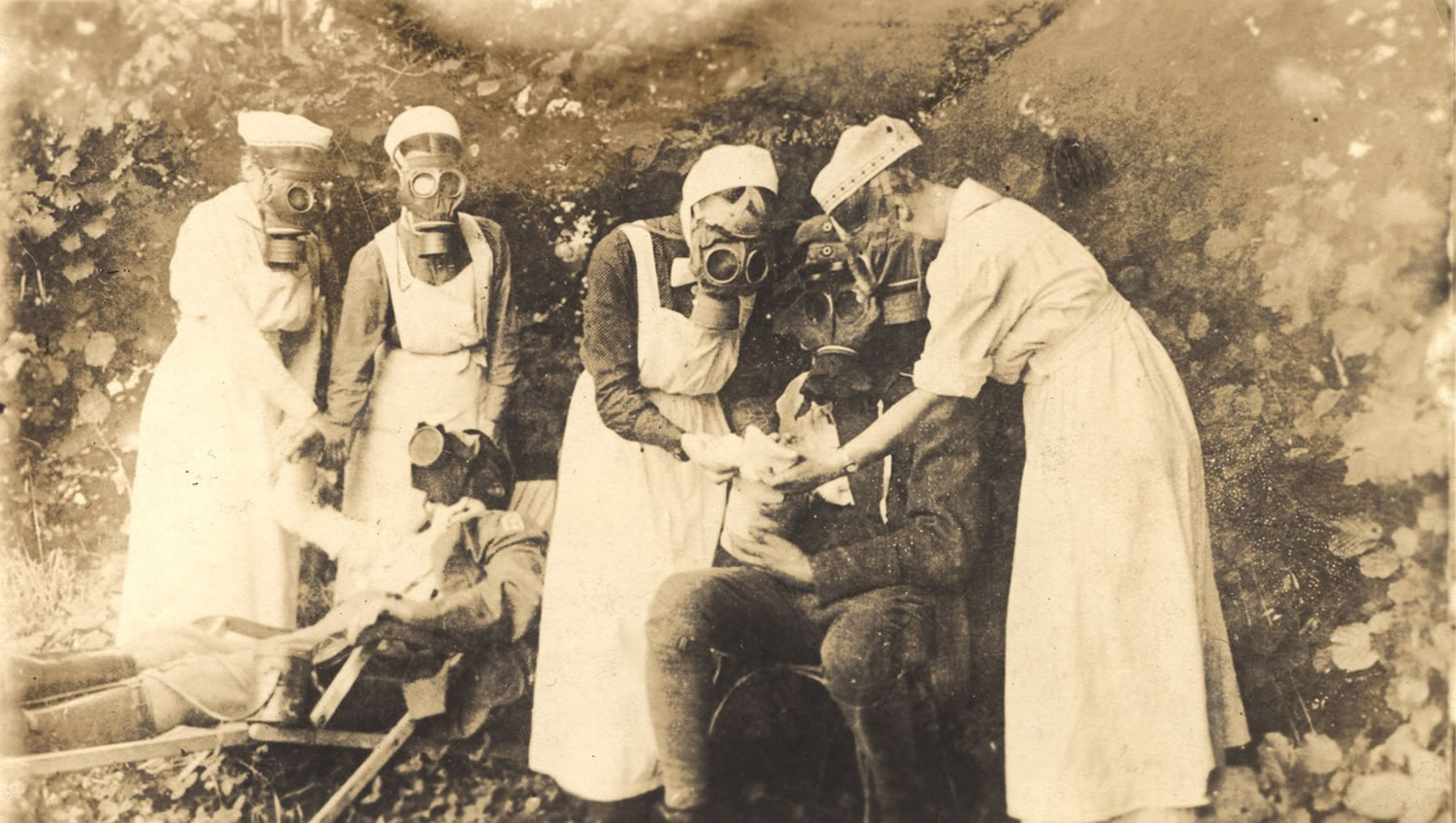Chemotherapy is a lifesaving treatment today, but it has far more sinister origins.The therapy evolved from studies of mustard gas, a warfare agent used in World War I to incapacitate enemy troops by chemically blinding those exposed to it and burning and blistering their skin and bronchial tubes.
Effects of the gas weren’t easy to endure. A nurse at the time, Vera Brittain, wrote in her 1933 autobiography that soldiers suffered “great mustard-colored blisters, blind eyes, all sticky and stuck together, always fighting for breath, with voices a mere whisper, saying that their throats are closing and they know they will choke.”
While it contaminated the ground, clothing and other items and caused considerable suffering in soldiers, the gas, which smells like mustard or horseradish, maimed a lot more people than it killed.
After World War I, scientists started studying the effects of the gas in order to further militarize it and to better protect their own soldiers against it. As part of that, they noticed a reduction in white blood cell counts in autopsies on soldiers killed in World War I.
Those studies continued in World War II, when doctors noticed that the chemicals specifically changed cell development in the bone marrow.
With that knowledge, they tried using one particular compound, nitrogen mustard, to slow progression of cancer cells of the lymph nodes, called lymphoma.
“They found it would actually shrink cancers,” said Joan Wendel, breast cancer nurse navigator at the Vancouver Clinic. “But it was a pretty harsh treatment.”
After World War II, doctors further refined the chemical combinations and treatment methods so the concoctions could target specific types of cancer cells with fewer side effects.
A new generation of chemical cocktails was developed to target cells that grow and divide at a faster rate than normal cells, which is characteristic of cancer.
Unfortunately some of the body’s normal cells also fall into that category, said Dr. Toni Storm-Dickerson, a breast surgical oncologist at Compass Oncology.
“That’s why people with chemotherapy go bald — their hair cells duplicate rapidly,” Storm-Dickerson said. “That’s also why their fingernails get weird.”
Normal fast-reproducing cells usually resume production after chemotherapy is finished, but cancer cells, which have weaker DNA, tend not to, she said.
“Chemotherapy has really changed the system of how we fight disease,” Storm-Dickerson said. “Even those with Stage 4 (cancer) can live for longer because of it.”
Chemotherapy is part of a multi-pronged modern approach to fighting breast cancer that can include radiation to shrink the size of a tumor and surgery to remove it. The chemicals are used after other methods to treat the entire body and attack any wayward cancer cells that may have escaped.
“Right now, they’ve really refined the treatment with multiple regimens designed for whatever cancer you’re treating,” Wendel said. “They’re learning to tailor it more specifically to each patient.”



